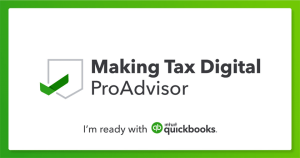Value Added Tax (VAT) is HMRC’s most efficient method of tax collection, and we have seen the frequency of random VAT checks stepped up in recent years. Whether your turnover is above the current VAT registration threshold of £85,000 or you choose to register voluntarily below the threshold, you now have to submit VAT returns through accounting software and there is no margin for error. Voluntary VAT registration isn’t often considered but can be very beneficial for certain small businesses as well as self-employed individuals in order to maximise any potential VAT recovery from purchases.
We advise businesses across a large range of industries, including more complex organisations such as trusts, not for profit organisations, and property development portfolios. HMRC make available various flat rates for VAT depending on your industry or if you have a limited amount of purchases, so it is important to use these schemes if available to you. We also have the experience and expertise to ensure that you comply with the now mandatory Making Tax Digital for VAT (MTD) guidelines and are filing them in the correct and most efficient way. We are certified QuickBooks ProAdvisors as well as Xero Certified Advisors.
MTD is HMRC’s plan to combat VAT fraud stemming from manual entry of figures and ultimately to have the most efficient digital tax system in the world. With digital links now in more places than ever before, it is imperative to ensure you are signed up correctly for MTD and report the correct sales and purchase figures to HMRC on each VAT return, with the appropriate digital ‘bridge’ in place with HMRC-recognised software such as QuickBooks or Xero. We can offer discounted licences for various accounting software packages. Contact us today to ensure you are set up correctly to comply with the new MTD guidelines.

Can I backdate my VAT registration?
Yes, a VAT registration can be backdated up to 4 years, providing you have kept all the receipts and invoices for the period in order to claim the VAT back on these.
What happens if I don't register when I should?
If you exceed the £85,000 threshold and do not register for VAT within the required 30 day period you will have to repay the VAT that was missed, plus interest on the late payment. The longer you leave the registration the more the fine will grow. In some cases HMRC can impose a penalty on top of this.
What is the VAT flat rate scheme?
HMRC offers a scheme for certain business industries whereby you still invoice clients for your services at 20% but pay the VAT back to HMRC at a lower fixed percentage rate of your quarterly turnover. The rate varies depending on your industry sector. For example, hairdressers would pay 13% of sales VAT over to HMRC whilst still invoicing clients 20%, photographers and publishers pay 11% rate and pubs benefit from paying over just 6% VAT to HMRC on their sales. The full list can be found on HMRC’s website. In a business’s first year of using the flat rate scheme, a 1% reduction on the published rate is also given.
Do I need to show my VAT registration number anywhere?
Whether a sole trader or a limited company, the following information must be shown on your sales invoices as a minimum:
LR Connections provides expert independent financial advice, accountancy and estate planning services